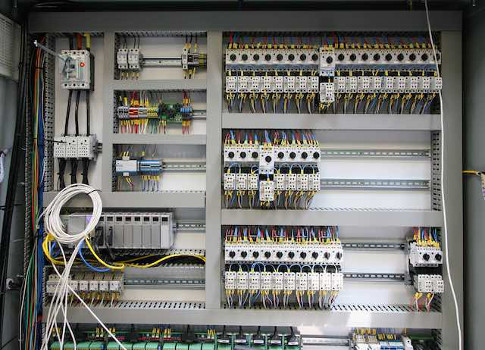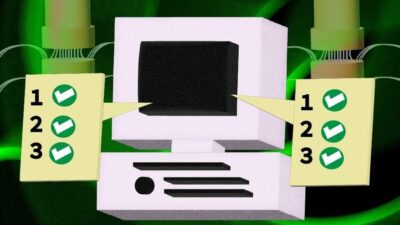Cover Story: Consider the features and typical applications for industrial controllers to understand what type of controller fits each application. Do you need a programmable logic controller (PLC), programmable automation controller (PAC), or industrial PC (IPC)? See comparison tables for PLCs, PACs, and IPCs.

Automation controller applications are widespread-as are the overlapping capabilities of programmable logic controllers (PLCs), programmable automation controllers (PACs), and industrial PCs (IPCs). Most of these controllers will work in discrete, process, and hybrid control applications to varying degrees, but what criteria should be used to choose the right controller for an application? (See Figure 1.)
To help understand what controller fits each application best, there are merging features of automation controllers to identify. Examining typical applications can highlight similarities and differences among these controllers.
Understanding the types of control systems
With the many controller choices, a basic understanding of the different types of controllers is important. Even within each controller system type, such as the PLC, there can be several families of controllers from low-end to high-end, with a wide range of functionality among families. The following are among controller types:
The PLC—the original relay replacer—is what started it all nearly 50 years ago. It’s suitable for controlling a wide variety of applications. Although available in many fixed input/output (I/O) formats with minimal expansion, (often called brick PLCs) the most common form factor is a rugged, modular, rack-based design that allows flexible configuration of the I/O based on the system requirements. The central processing unit (CPU) of a PLC is typically a purpose-designed controller with limited serial and Ethernet communications capabilities. The PLC commonly uses ladder logic programming, although other options are often available, and is a very competitively priced machine control option.
The PAC is the next-generation PLC. While these controllers are similar in form factor and design to the PLC, the PAC’s newer technologies, borrowed from innovations in consumer PCs and mobile device design innovations, have advanced their capabilities. PACs typically have expanded communications and data-logging capabilities compared to PLCs.
PACs also have a variety of programming options, typically centered around the International Electrical Commission (IEC) 61131-3 programming standard, which extends control capability into high-end applications. But even with high-end programming available, the PAC’s roots are still in ladder logic.
The IPC is a PC built to operate reliably in an industrial environment. But with newer and smaller component designs and more compact operating systems, the IPC no longer looks like a desktop PC or even a panel-mount PC, two of the most common form factors.
The IPC is now being designed for DIN-rail or rack mounting, which expands the application space. Because an IPC is a PC at heart, its theoretical maximum processing power and communications and data storage capabilities are unmatched by PLCs or PACs.
Some early versions of the IPC received some strong criticism because they were not as rugged as they should have been and because their operating systems were very unstable, but today’s versions have improved.
Controller feature comparison
Many considerations go into selecting a control solution, and it begins with the application. It’s important to fully understand application needs as well as the desired results from the control system to adequately specify the required features.
Controller features can be wide-ranging, spanning from the very basic (like the total I/O required) to the more detailed specifications (like data handling capabilities). Consider the features listed in Table 1 when selecting a controller for each application.
Table 1: Typical features found in industrial controllers: PLC, PAC, IPCs
Keep in mind that these rankings are subjective, and results may vary.
Serial communications are well-established in industrial applications and have been, and will be, around for a while. Serial communications have the ability to effectively communicate with many standard devices via RS-232 and RS-485 digital data links, but Ethernet communication has taken a bite out of serial communications and will continue to do so in Industrial Internet of Things (IIoT) and other web-based applications. In addition to being a good fit in the IIoT, Ethernet can communicate to standard devices with a typical 10/100 Mbps connection.
Standard protocol communications include the ability to talk to typical industrial devices using popular protocols such as Modbus remote terminal unit (RTU), Modbus transmission control protocol (TCP), EtherNet/IP, Profinet, etc. Custom protocol communications allow controllers to talk to nonstandard industrial devices using custom-written protocols that execute in the controller.
A suitable amount of memory needs to be available for the controller program and I/O and for storing application data files, tag names, descriptions, etc. Adequate CPU capabilities ensure the controller has the computing power necessary to accommodate the application at hand including fast scan times, logic, data and communication handling, and other functions.
Simple programming provides a straightforward environment for control of basic machines and systems, typically using one language such as ladder diagram. Enhanced programming provides a more flexible, but more complex, user interface with a variety of programming options including a ladder diagram, structured text, functional diagram, and instruction list.
Built-in data logging provides the ability to log data points from the system I/O directly into the PLC memory (see Figure 2). Access to data for IIoT requires more advanced functionality for data manipulation, storage, and delivery such as database access, remote access, and email push notifications. Enhanced security for the data and application can be built-in with usernames and passwords, but it is often implemented in the next layer up from the controller, typically at the human-machine interface (HMI) level. The final feature listed, but sometimes the most important one, is the price based on the average system cost.
Industrial controllers’ applications
Based on the application requirements, certain control systems will function better than others, but this determination will often vary from individual to individual and for each job (see Table 2).
Table 2: Industrial controllers’ capabilities in typical applications
Again, all of these rankings are subjective, and individual results may vary for each application.
PLCs replaced relays
The best fit and most common use for a PLC is most likely in machine control applications. The PLC was originally designed for machines, and this certainly is its leading application today. Many machine control applications are a good fit for brick PLCs due to this design’s low cost, small form factor, and ease of use. The PLC’s low-cost hardware and programming software, along with simple programming methods, make it a common choice for original equipment manufacturer (OEM) machine builders.
It is important to note that PLC and PAC capabilities are converging. The gap in functionality is narrowing, which widens the range of suitable applications for each controller type. Many of the PAC capabilities discussed below can therefore be realized in a high-end PLC as well.
PACs’ widened control applications
Specify any control application, and it is likely that the PAC would be a suitable controller. With simple data logging, the PAC allows access to the data within the controller to optimize the factory.
With large I/O counts, expanded memory, and enhanced data collection capabilities-the PAC is a fit for a very wide range of applications (see Figure 3). The capabilities setting the PAC apart from the PLC and placing it on an IPC level are coordinated motion and integrated vision capabilities.
The PAC often can handle multi-axis motion control and dual axes or higher levels of coordinated motion. Some can perform circular interpolation if needed and control eight or more axes of motion. The high-speed communication in the PAC also allows it to communicate well with today’s smart vision sensors to pass real-time data back and forth. This also enables the implementation of vision-guided motion functions within a PAC.
IPCs for process control applications
IPCs are well-suited for process control applications with extensive proportional-integral-derivative (PID) and other algorithmic control requirements. These more complex projects often have very high analog I/O counts and usually need higher level math and advanced control PID functionality.
With expanded data collection capabilities and extensive communication options available, distributed data collection and control applications are a good fit for IPCs. In many plants, smaller skids systems are often distributed throughout the facility and have their own PLC-based control, with these PLCs communicating to a central IPC.
Hybrid control applications
While there is much overlap with PACs, IPCs are well-suited for batch and continuous process control and for automated machines working together to form a process where raw material enters, and a finished product exits. For these applications, one controller system connects with multiple expansion bases in multiple enclosures throughout the process. Multiple coordinated processors also may be used.
There are many considerations that go into choosing the best controller, and the selection process begins with the application. Many applications can be controlled by a PLC, a PAC, or an IPC—but one type of controller usually fits best. Taking the time to select the right type of controller for the application will result in the simplest, smallest, and least expensive control system.
Jeff Payne is the automation controls group product manager at AutomationDirect. Edited by Emily Guenther, associate content manager, Control Engineering, CFE Media, [email protected].
MORE ADVICE
Key Concepts
- How to choose the best controller for an application
- The types of controllers and their features
- Typical applications for industrial controllers.
Consider this
What are the costs associated with not specifying new control systems and taking advantage of additional features, functions, and flexibility?



